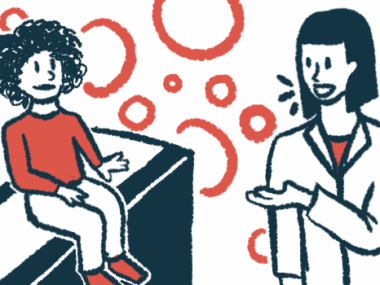Florida State University gets $5M to fund pediatric rare disease research
Announcement made at FSU symposium on advances in rare disease research
Written by |

Florida State University (FSU) has received $5 million from the State of Florida to support its Institute for Pediatric Rare Diseases, which conducts research on rare diseases, such as aromatic l-amino acid decarboxylase (AADC) deficiency, that affect children.
The announcement was made by state representative Adam Anderson during FSU Discovery Days’ Pediatric Rare Disease Symposium, held Oct. 7, which hosted some of the foremost authorities and experts on rare disease research and discovery.
“We are creating a hub where researchers, clinicians, and families can work together to find answers for conditions that too often go unrecognized and untreated,” Alma Littles, MD, dean of FSU College of Medicine, said in a university news story. “Our mission is simple yet powerful: to bring hope to children and families by driving discoveries that can lead to new therapies and interventions for rare diseases.”
Advocating for advances in rare disease research
“I know that it’s just a matter of time before we’re celebrating a child whose life was saved by the good work that’s being done here at FSU,” Anderson said. Anderson himself has been an advocate for advances in rare disease research, since the death of his 4-year-old son due to Tay-Sachs disease, a rare genetic disease caused by the absence of an enzyme that helps break down certain fatty molecules, which accumulate to toxic levels in nerve cells.
Similar to AADC deficiency, which is caused by the absence of an enzyme needed to produce certain neurotransmitters, or brain signaling molecules, Tay-Sachs affects the normal function of the nervous system. Both conditions lead to symptoms such as developmental delay, muscle weakness, and seizures.
The symposium highlighted advances in rare disease research, including genome sequencing, gene therapy, and molecular medicine, which is a field that is developing new ways to diagnose and treat diseases by studying how genes, proteins, and other molecules work and interact to cause disease.
Topics were presented by experts from the National Institutes of Health, the universities of Stanford, Harvard, Miami, and Florida, and Nicklaus Children’s Health System, which treats children in South Florida.
“These experts provide us with valuable insight into the state of rare disease programs and the critical role of collaboration between researchers, clinicians and the families that they serve,” said Pradeep Bhide, PhD, director of the FSU Institute for Pediatric Rare Diseases.
Changing landscape of genetic medicine
The event began with FSU president Richard McCullough, PhD, presenting the keynote speaker Terence R. Flotte, MD, dean of the T.H. Chan School of Medicine at the University of Massachusetts. McCullough described Flotte as a pioneer in the field of rare disease research and gene therapies: “His work has literally changed the landscape of genetic medicine, particularly for rare and life-threatening conditions.”
Flotte has worked with adeno-associated virus as a delivery system for gene therapies in neurological diseases and discussed the progress of gene therapies in clinical trials, with 31 gene therapies approved globally for clinical use as of January.
Upstaza (eladocagene exuparvovec), developed by PTC Therapeutics, is a gene therapy that was approved in 2022 in the European Union and the U.K. as the first disease-modifying treatment for AADC deficiency. The company is now seeking approval of Upstaza by the U.S. Food and Drug Administration.
Two symposiums also discussed rare disease centers and programs, and advances in genetics and gene therapy, and were followed by a round table with biopharma companies working on treatments for rare diseases.
“We’re laser focused on trying to save the lives of children facing rare diseases,” McCullough said. “Through research, education, clinical care and advocacy, we aim to make a real difference.”






